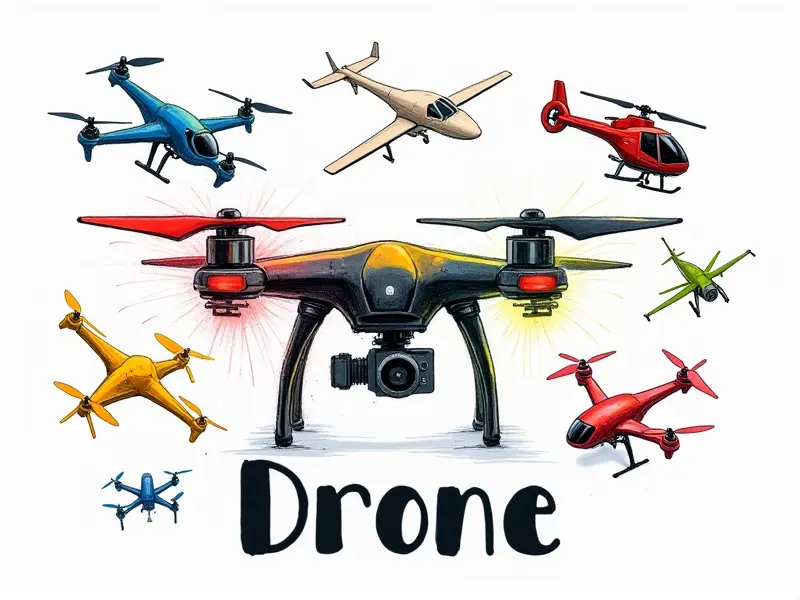Can drones fly in strong winds?

Drones are increasingly popular for various applications, from aerial photography to delivery services. However, one common question among drone enthusiasts and operators is whether drones can handle strong winds effectively. This article explores the capabilities of different types of drones under windy conditions and provides tips for flying safely.
Can RC Quadcopters Handle Strong Winds?
RC quadcopters are a popular choice for hobbyists due to their maneuverability and stability. However, strong winds can significantly impact their performance:
- Torque Effect: Wind can cause torque issues, making it harder to maintain stable flight.
- Battery Consumption: Fighting against the wind increases power consumption, reducing battery life.
Flying Through Gusty Conditions: Drone Tips
Flying drones in gusty conditions requires careful planning and technique:
- Pre-flight Checks: Ensure your drone is properly maintained before each flight.
- Stay Grounded: If the wind speed exceeds your drone's capability, avoid flying altogether.
Drones Flying in Strong Winds: Is It Possible?
The answer depends on several factors including the type of drone and its design specifications. For instance:
- Wind Tolerance Ratings: Some drones are designed to withstand higher wind speeds.
- Payload Considerations: Heavier payloads may reduce a drone's ability to handle strong winds effectively.
Surviving Windy Conditions with Your Drone
To maximize your drone’s performance in windy conditions, consider the following tips:
- Select Optimal Times: Fly during less windy periods of the day or week.
- Use GPS Lock: Enable GPS lock to maintain steady flight even when winds are gusty.
How to Fly Helicopters in Gusty Weather
Flying drones shaped like helicopters presents unique challenges, but with the right approach, it's possible to manage strong winds:
- Adjust Throttle Settings: Fine-tune your throttle settings for better control.
- Pilot Experience: More experienced pilots are generally more adept at handling challenging weather conditions.
Airplanes and Strong Winds: A Guide
Drones designed like airplanes face different aerodynamic challenges in strong winds. Here’s how to manage:
- Stabilization Features: Utilize stabilization features such as gyroscopes.
- Flight Path Planning: Plan your flight path carefully to avoid areas with stronger winds.
FPV Racing Drones vs. Strong Winds
First-person view (FPV) racing drones are highly maneuverable but require special consideration in strong wind conditions:
- Rapid Adjustments: Quick adjustments may be necessary to maintain control.
- Pilot Skill: Advanced piloting skills can help manage the challenges of flying FPV drones in high winds.
Can FPV Racing Drones Tackle High Winds?
While FPV racing drones are designed for speed and agility, they may struggle with extreme wind conditions. However, with proper equipment and skill:
- Pilot Training: Extensive training can prepare pilots to handle high winds.
- Proper Gear: Using the right gear can enhance stability during flights.
Battling the Elements: Flying Drones in Wind
Flying drones in windy conditions requires a combination of proper equipment and knowledge. Here are some additional tips:
- Weather Forecasting: Check weather forecasts before flying.
- Flight Simulation: Practice with flight simulators to improve your skills under simulated wind conditions.
Drone Stability in Storms: What You Need to Know
Flying drones during storms is extremely risky and generally not recommended. However, understanding stability factors can help:
- Stability Features: Utilize features like propeller guards and advanced stabilization systems.
- Avoidance Systems: Use obstacle avoidance sensors to prevent collisions with objects in windy conditions.
Navigating Gales: Drone Flight Stability Tips
To enhance stability during gale-force winds, consider the following tips:
- Battery Management: Ensure your drone's battery is fully charged to maintain consistent performance.
- Firmware Updates: Keep firmware up-to-date for better wind resistance and control features.
Conclusion
Flying drones in strong winds presents significant challenges, but with the right equipment and techniques, it is possible to maintain stable flight. Understanding your drone's capabilities, planning ahead, and being prepared are key factors in successfully navigating windy conditions. Whether you're a hobbyist or professional operator, these tips will help enhance your flying experience and ensure safety.

